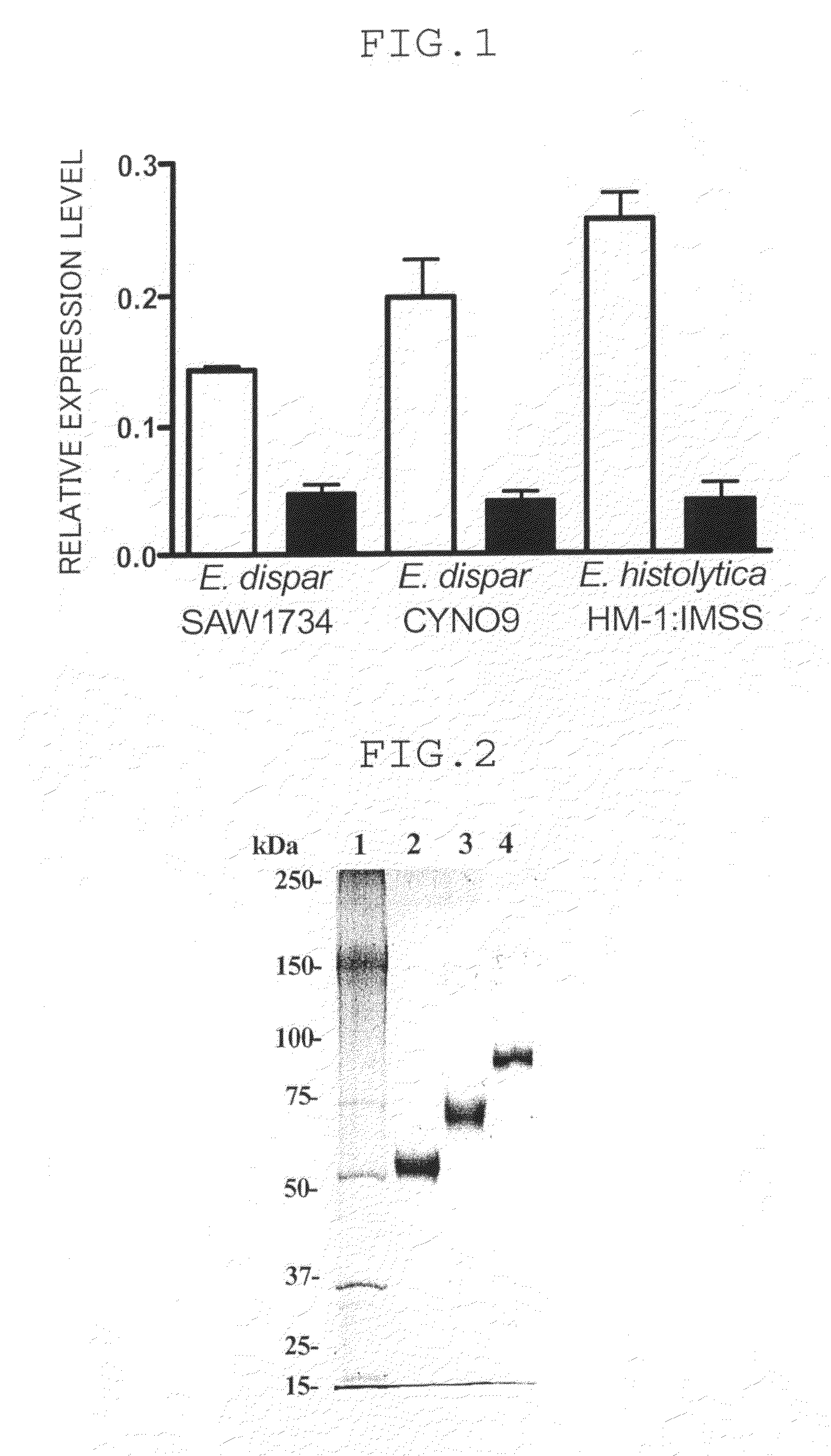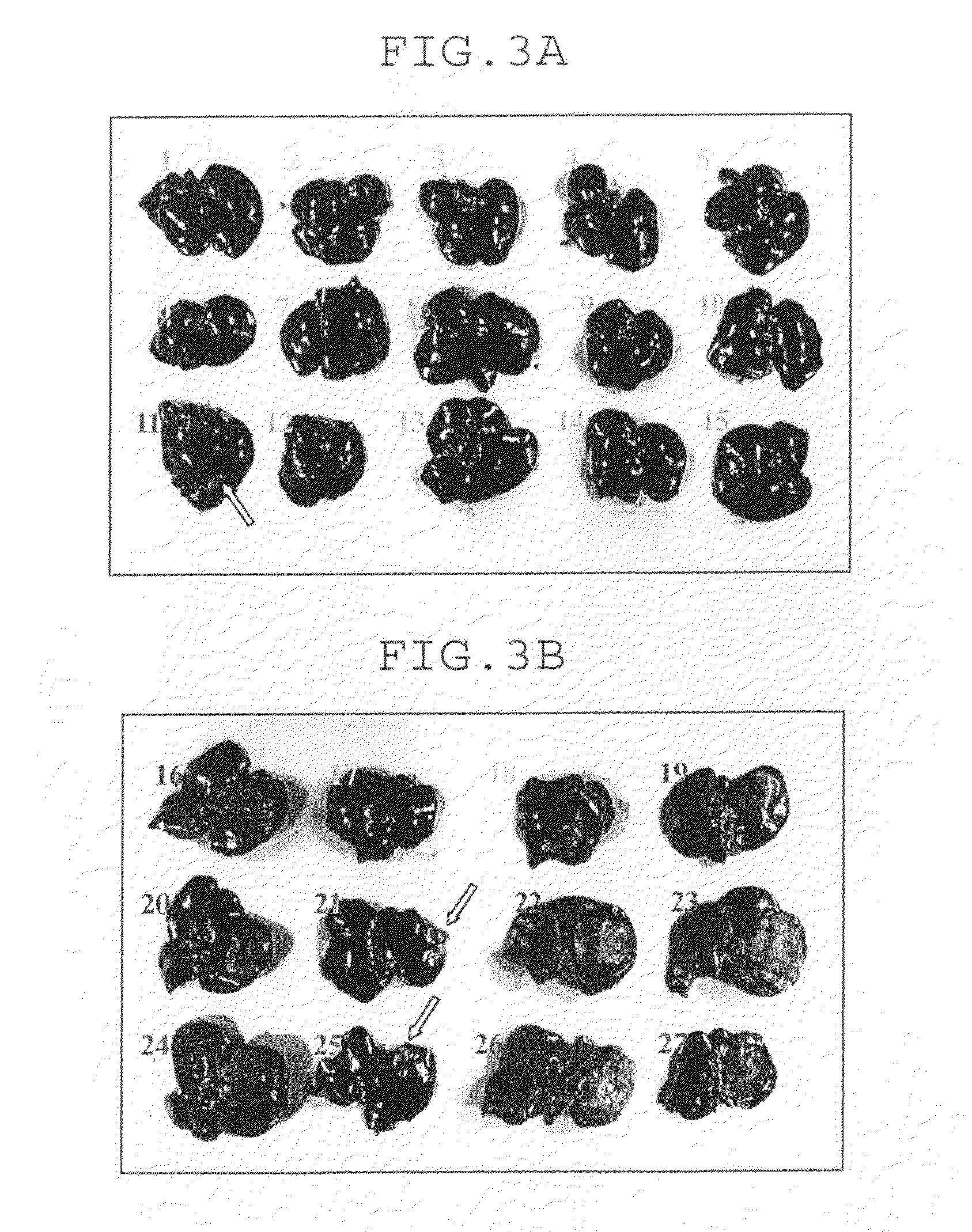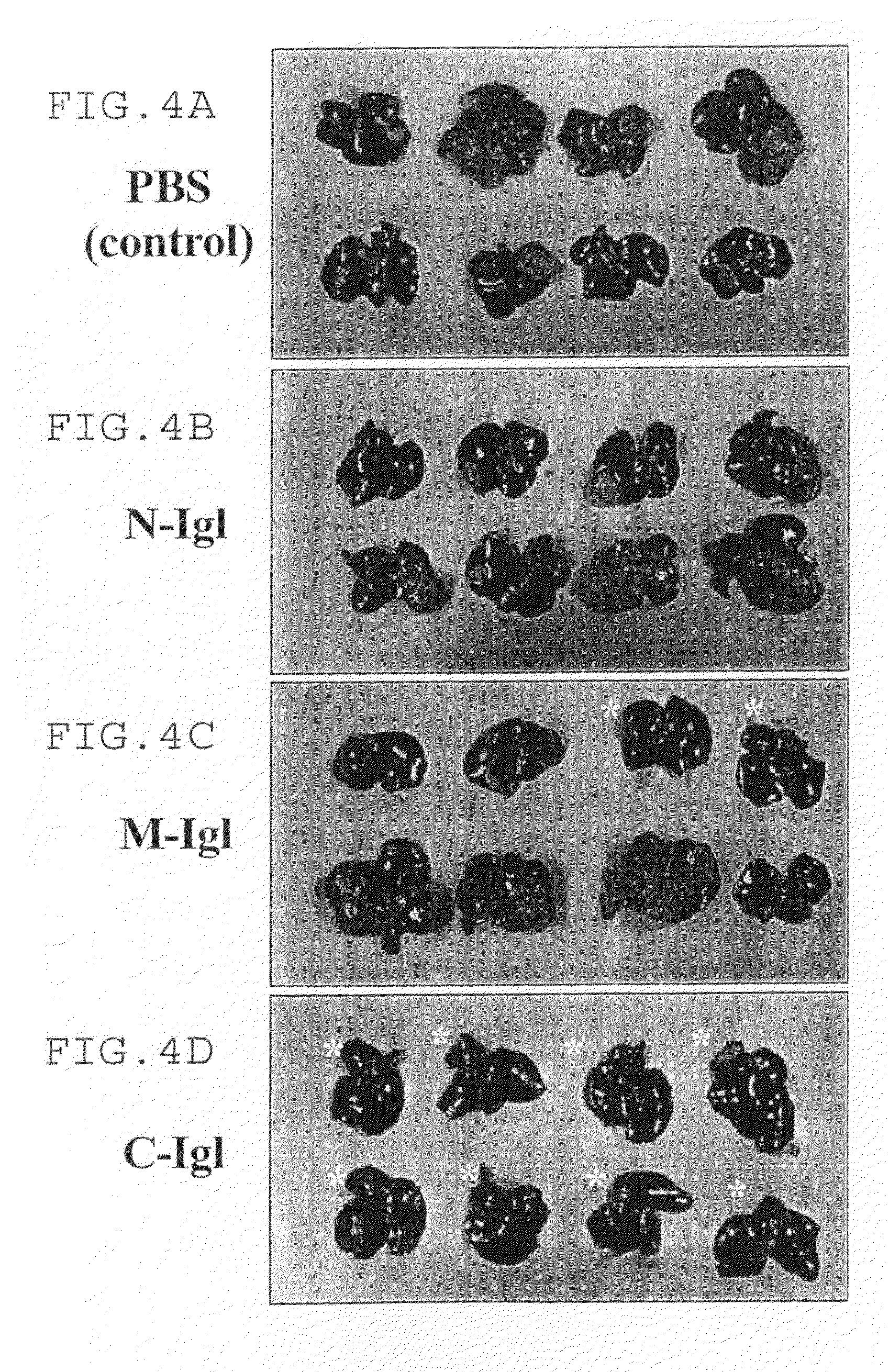Amebiasis vaccine
a technology for amebiasis and vaccines, applied in the field of amebiasis vaccines, can solve the problems of not being able to use vaccines, and achieve the effects of preventing infection, stably mass-produced, and good production efficiency
- Summary
- Abstract
- Description
- Claims
- Application Information
AI Technical Summary
Benefits of technology
Problems solved by technology
Method used
Image
Examples
example 1
Real Time RT-PCR Analysis of the Amount of IGL Gene Expressed
[0049]Expression of the IGL1 and IGL2 genes of the E. histolytica was compared by real time RT (reverse transcription)-PCR.
[0050]Full length RNA was isolated from the trophozoite cultures of E. histolytica and E. dispar by using RNeasy mini-kit (Qiagen), and cDNA was synthesized by using GeneAmp RNA PCR kit (Applied Biosystems).
[0051]The reaction mixture for use in the quantitative real time RT-PCR analysis was prepared by mixing SYBR Premix Ex Taq (Takara Shuzo Co., Ltd.), specific primer as described below, Rox dye, and the cDNA.
[Table 1]
[0052]
TABLE 1GeneTypeRegionPrimerE. disparIGL1forward5′-TGA CAA AGA CAATAC TTG TAA AAAGTG-3′reverse5′-ATT ACT AAC ACATGC ACA TTT TTTGTC-3′IGL2forward5′-TCG ATG AAA ATAATG TAT GCC AGAAAT-3′reverse5′-TCA TCA AGG CAAGCA CAT TGA CTA-3′E. histolyticaIGL1forward5′-GTT CAC AGG TTGGTG CTT GTA CG-3′reverse5′-ACA GTA CAT GGCTTT TCT CCG GTA-3′IGL2forward5′-GAT TCA CAA ACAAAG GAG TGT GCC-3′reverse5′...
example 2
Preparation of Recombinant Protein
[0057]The recombinant IGL protein was prepared basically on the bases of the method disclosed in TACHIBANA, H., CHENG, X. J., MASUDA, G., HORIKI, N. and TAKEUCHI, T. (2004), Evaluation of recombinant fragments of Entamoeba histolytica Gal / GalNAc lectin intermediate subunit for serodiagnosis of amebiasis. J Clin Microbiol, 42, 1069-1074.
[0058]A gene fragment coding for the full length amino acid excluding the signal sequences at the N and C termini from E. histolytica IGL1 for (SEQ ID NO: 1) [F-IGL, amino acid No. (aa) 14-1088] was amplified by PCR.
[0059]The fragment was then expressed by incorporating in XhoI site of pET19b vector, and introducing the vector in E. coli BL21 Star™ (DE3) pLysS.
[0060]E. coli was centrifuged, fractured by ultrasonication in a surfactant solution, and centrifuged to obtain the precipitate. This procedure was repeated 3 to 4 times. This washing procedure was conducted by the protocol indicated in the Protein refolding kit...
PUM
| Property | Measurement | Unit |
|---|---|---|
| molecular mass | aaaaa | aaaaa |
| body weight | aaaaa | aaaaa |
| surface adhesion | aaaaa | aaaaa |
Abstract
Description
Claims
Application Information
 Login to View More
Login to View More - R&D
- Intellectual Property
- Life Sciences
- Materials
- Tech Scout
- Unparalleled Data Quality
- Higher Quality Content
- 60% Fewer Hallucinations
Browse by: Latest US Patents, China's latest patents, Technical Efficacy Thesaurus, Application Domain, Technology Topic, Popular Technical Reports.
© 2025 PatSnap. All rights reserved.Legal|Privacy policy|Modern Slavery Act Transparency Statement|Sitemap|About US| Contact US: help@patsnap.com



